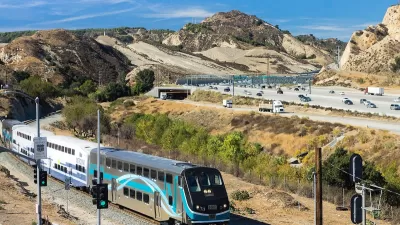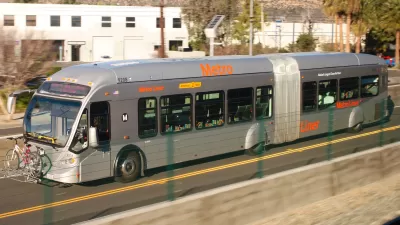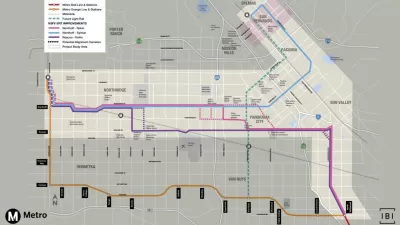The Warner Center 2035 Plan was designed to bring growth to Los Angeles’s San Fernando Valley. If the opening of a $350-million Westfield Village in September is any indication, it’s succeeding.
Los Angeles City Councilmember Bob Blumenfield, who ushered the plan to adoption in 2013, sees his role in this growth as that of a "closer"—working at the city and state levels to create opportunities for development, and then "getting out of the way."
"The biggest city financial tool is subvention," he explains. His own political work concerning subvention moved Westfield’s opening date up by 10 years. Also useful has been the Local Development Corporation (LDC), a fund of mobility fees paid by new developments. Blumenfield is working on a framework for an entity to expend the funds, which are growing as development heats up in the area.
The Warner Center plan addresses a problem all too well known to planners and developers in Los Angeles:
"Previously, the area saw hodgepodge development—wherein everything came to the Council and needed a variance, and every issue was a fight. The plan creates a smoother path… It’s a plan that’s truly a plan."
It also shifts planning away from another quintessential Los Angeles issue: cars. The Valley is notorious for lacking public transportation options, so Blumenfield is working to get Metro to invest in transit capacity. That expectation is baked into the plan:
"The Warner Center 2035 Plan also relies on us thinking differently and not assuming that we have to drive everywhere. The plan envisions more pedestrian-friendly and more bike-friendly development. If you can live, work, and play in an area, you don’t have to get in your car every time."
Blumenfield’s experience with financing tools predates his tenure in the city council. As a state senator, he authored two bills aimed at reforming California Redevelopment Agencies. The full interview in The Planning Report explains how that effort ended with CRAs being eliminated altogether.
FULL STORY: Blumenfield Proud of Warner Center 2035's Blueprint for Growth

Planetizen Federal Action Tracker
A weekly monitor of how Trump’s orders and actions are impacting planners and planning in America.

Maui's Vacation Rental Debate Turns Ugly
Verbal attacks, misinformation campaigns and fistfights plague a high-stakes debate to convert thousands of vacation rentals into long-term housing.

Cuomo Is the Candidate of Both NIMBYs and Developers. What Gives?
In the New York City mayoral race, odd bedfellows align to preserve the housing status quo.

The Subversive Car-Free Guide to Trump's Great American Road Trip
Car-free ways to access Chicagoland’s best tourist attractions.

San Antonio and Austin are Fusing Into one Massive Megaregion
The region spanning the two central Texas cities is growing fast, posing challenges for local infrastructure and water supplies.

Charlottesville Temporarily Has No Zoning Code
A judge ordered the Virginia city to throw out its newly revised zoning code, leaving permitting for new development in legal limbo.
Urban Design for Planners 1: Software Tools
This six-course series explores essential urban design concepts using open source software and equips planners with the tools they need to participate fully in the urban design process.
Planning for Universal Design
Learn the tools for implementing Universal Design in planning regulations.
Heyer Gruel & Associates PA
JM Goldson LLC
Custer County Colorado
City of Camden Redevelopment Agency
City of Astoria
Transportation Research & Education Center (TREC) at Portland State University
Jefferson Parish Government
Camden Redevelopment Agency
City of Claremont





























